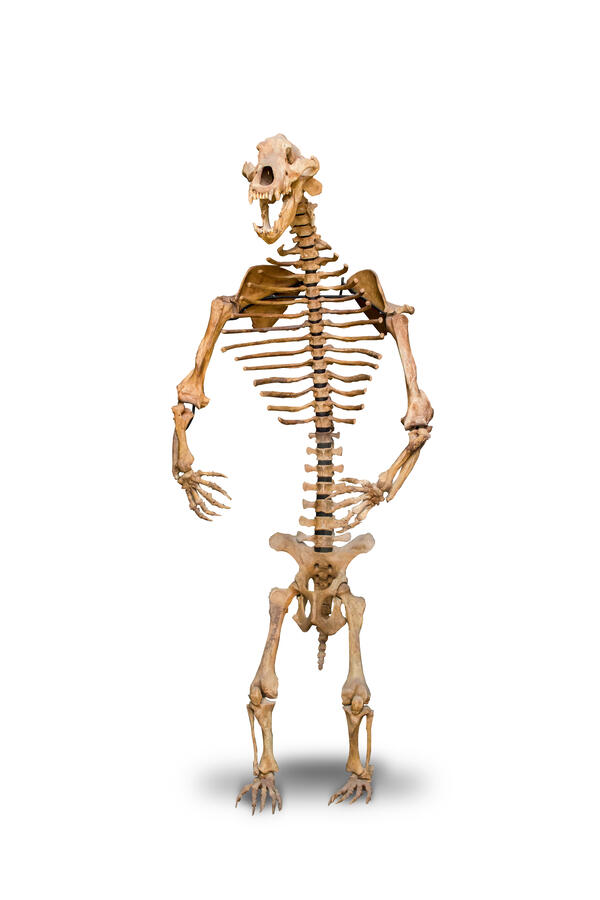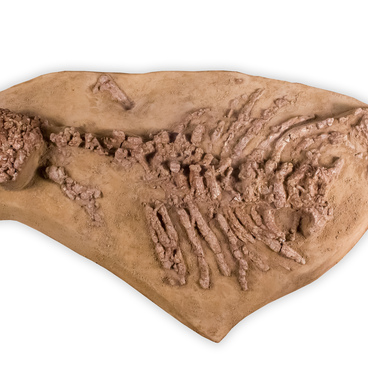Cave bears appeared about 300,000 years ago and inhabited modern Eurasia. Their fossils were not found on other continents. They were huge beasts, almost one and a half times the size of modern-day brown bears. Adults reached 3.5 meters in length and weighed 300 to 500 kilograms. The frontal part of their body was very powerful, their legs were short and strong, and their head was large with a steep forehead. Large sinuses covered 30 to 60 percent of the skull: they were necessary in order for the cold air to warm up before reaching the lungs. Nevertheless, because of them the animal’s skull became rather fragile and could not withstand direct hits.
Paleontologists often find their bones in caves. Some scientists suggested that the cave bear used them simply as dens. However, it is unlikely, as there would not be enough caves for all of them. The bears most likely established dens in dense forest thickets. During the Ice Age, the winters were long and cold, so the animals could spend up to six months hibernating.
The fossils of cave bears are commonly found in mountainous areas, 2000-3000 meters above sea level. Most likely, there they could find the safest shelters and a sufficient amount of food.
Cave bears teeth show greater wear (than most modern bears), which could mean that they ate mostly plants. The meat was probably not available to them or only a small part of their diet. To accumulate more fat for winter, cave bears often ate wild bee honey just like their modern descendants.
The average lifespan of individuals of this species was 20 years. Old or sick animals were easy prey for wolves, hyenas, or cave lions.
Cave bears were extinct completely about 15 thousand years ago. There were several reasons for their extinction. The early humans hunted them for meat and fur. It was harder for the animals to find food due to climate change. Moreover, the caves flooded and could not serve as shelters, instead they often became dangerous traps for them.
Paleontologists often find their bones in caves. Some scientists suggested that the cave bear used them simply as dens. However, it is unlikely, as there would not be enough caves for all of them. The bears most likely established dens in dense forest thickets. During the Ice Age, the winters were long and cold, so the animals could spend up to six months hibernating.
The fossils of cave bears are commonly found in mountainous areas, 2000-3000 meters above sea level. Most likely, there they could find the safest shelters and a sufficient amount of food.
Cave bears teeth show greater wear (than most modern bears), which could mean that they ate mostly plants. The meat was probably not available to them or only a small part of their diet. To accumulate more fat for winter, cave bears often ate wild bee honey just like their modern descendants.
The average lifespan of individuals of this species was 20 years. Old or sick animals were easy prey for wolves, hyenas, or cave lions.
Cave bears were extinct completely about 15 thousand years ago. There were several reasons for their extinction. The early humans hunted them for meat and fur. It was harder for the animals to find food due to climate change. Moreover, the caves flooded and could not serve as shelters, instead they often became dangerous traps for them.



